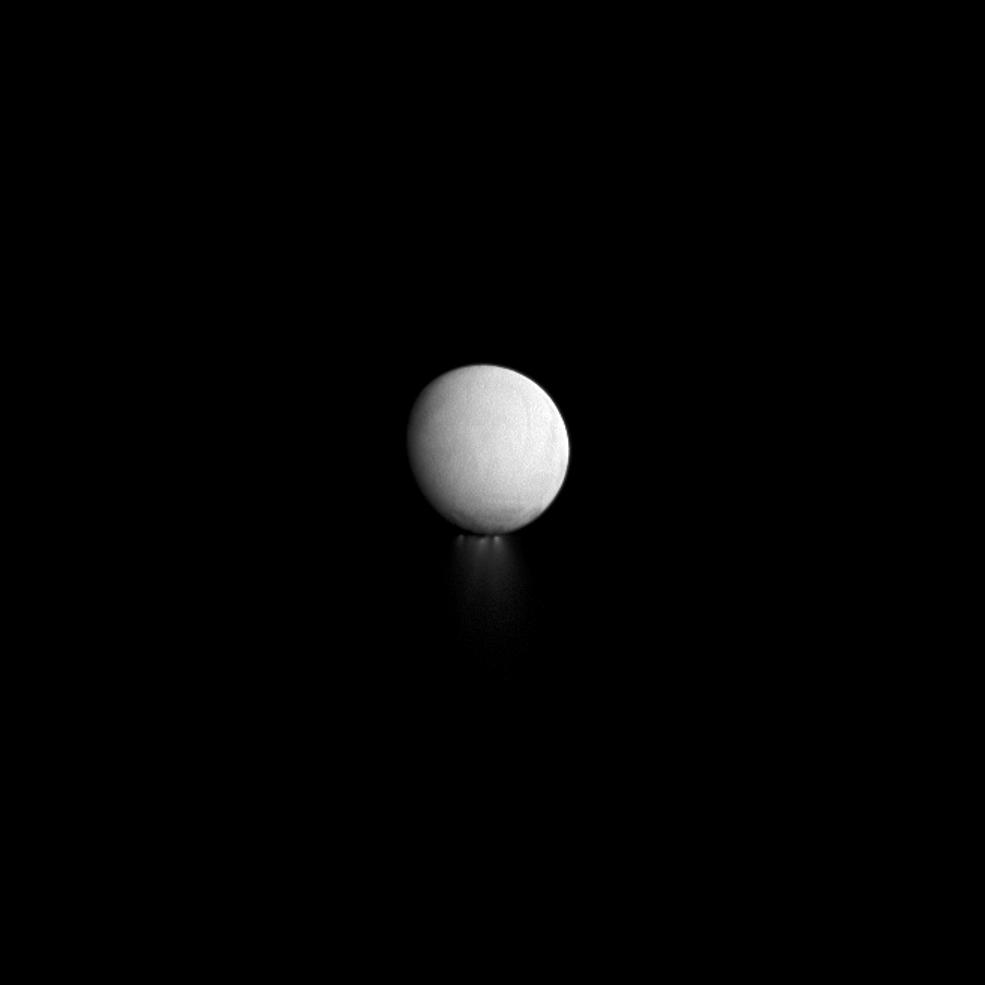More on Enceladus, E Ring
More on Enceladus, E Ring
Honestly, this is starting to get unhealthy.
Okay, no, it's not. But I'm developing a sort of fanboy love affair with Enceladus.
The image was taken on September 24, 2012, from 452,000 miles away at a phase angle of 170°. According to NASA, the image has been magnified in order to enhance the cryovolcanic jets.
In addition to being spectacular, it is worth mentioning again that these are the ice geysers that are forming Saturn's E Ring.
Enceladus is fascinating. For now, I just can't help myself.
____________________
Notes:
Jet Propulsion Laboratory. "Catalog Page for PIA15642". January 7, 2013. Photojournal.JPL.NASA.gov. February 2, 2013. http://photojournal.jpl.nasa.gov/catalog/PIA14642
More on Enceladus, E Ring
Honestly, this is starting to get unhealthy.
Okay, no, it's not. But I'm developing a sort of fanboy love affair with Enceladus.
The image was taken on September 24, 2012, from 452,000 miles away at a phase angle of 170°. According to NASA, the image has been magnified in order to enhance the cryovolcanic jets.
As the long winter night deepens at Enceladus' south pole, its jets are also progressively falling into darkness. The shadow of the moon itself is slowly creeping up the jets making the portions closest to the surface difficult to observe by the Cassini spacecraft.
Cassini looks toward the night side of Enceladus (313 miles, or 504 kilometers across) in this image. Enceladus is lit by light reflected off Saturn rather than by direct sunlight.
This view looks toward the Saturn-facing hemisphere of Enceladus. North on Enceladus is up. The image was taken with the Cassini spacecraft narrow-angle camera on Sept. 24, 2012 using a spectral filter sensitive to wavelengths of near-infrared light centered at 930 nanometers.
Cassini looks toward the night side of Enceladus (313 miles, or 504 kilometers across) in this image. Enceladus is lit by light reflected off Saturn rather than by direct sunlight.
This view looks toward the Saturn-facing hemisphere of Enceladus. North on Enceladus is up. The image was taken with the Cassini spacecraft narrow-angle camera on Sept. 24, 2012 using a spectral filter sensitive to wavelengths of near-infrared light centered at 930 nanometers.
In addition to being spectacular, it is worth mentioning again that these are the ice geysers that are forming Saturn's E Ring.
Enceladus is fascinating. For now, I just can't help myself.
____________________
Notes:
Jet Propulsion Laboratory. "Catalog Page for PIA15642". January 7, 2013. Photojournal.JPL.NASA.gov. February 2, 2013. http://photojournal.jpl.nasa.gov/catalog/PIA14642





